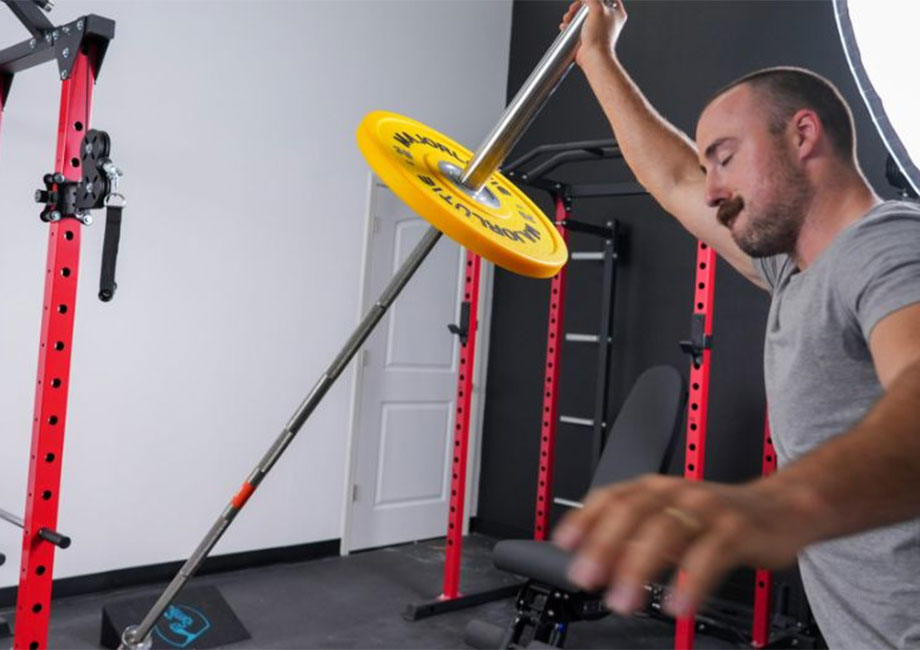We test and review fitness products based on an independent, multi-point methodology. If you use our links to purchase something, we may earn a commission. Read our disclosures.
One of the most common fitness goals is getting “six-pack abs,” so fitness enthusiasts in gyms everywhere take things to the mat, knocking out crunch after crunch in an endless pursuit of a chiseled midsection to show their Instagram and TikTok followers.
A well-developed rectus abdominis, unfortunately, doesn’t equate to core strength and stability, and if you’re solely relying on sagittal plane exercises like the crunches exercise and sit-ups, chances are you’re not reaching your full fitness potential.
“For optimal core strength and stability, you need to perform exercises that use the transverse plane of motion,” says Kate Meier, NASM-CPT, USAW-L1, CF-L1, and GGR Head of Content. “You need rotation and anti-rotation exercises.”
RELATED: Functional Core Exercises
Planes of Movement
To understand the fitness principles involved with rotation and anti-rotation exercises, we must first discuss each of the three planes of motion. The National Academy of Sports Medicine1 describes them as follows:
- Sagittal Plane: Imagine there was a line that divided your body vertically into left and right halves. Forward, backward, upward, and downward movements that do not cross that midline are considered sagittal plane exercises.
- Frontal Plane: The frontal plane, also called the coronal plane, divides the body into vertical halves yet again, except now it’s a front half and a back half. Side-to-side movements, abduction, and adduction are considered frontal plane movements.
- Transverse Plane: Instead of vertical halves, the imaginary line now separates the top and bottom halves of your body. Transverse plane exercises involving twisting, rotation, and anti-rotation exercises.
RELATED: Dumbbell Core Workout
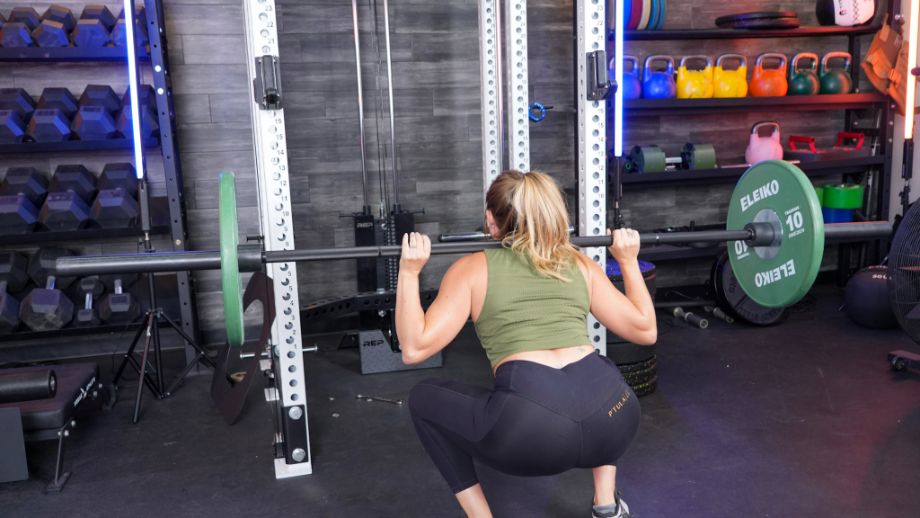
“Many strength training programs heavily rely on sagittal plane exercises, like squats, deadlifts, bench presses, and rows, to name a few,” says Kate Meier, CPT, USAW-L1, CF-L1. “Unfortunately, transverse plane exercises are far less common. So, to supplement other training modalities, it’s worth it to work in some sets of rotation and anti-rotation exercises to further improve core stability and strength.”
Rotation vs Anti-Rotation Exercises
So, what exactly are these rotation and anti-rotation exercises we speak of?
“Rotation exercises involve twisting your torso through the transverse plane of motion in order to produce rotational power. Sport-specific examples of rotational movements include passing a football, throwing a punch, and swinging a tennis racket,” says Kate.
Since rotation exercises more often involve movement that produces rotational force, they’re essential for building core strength and developing explosive power that derives from strong core muscles.
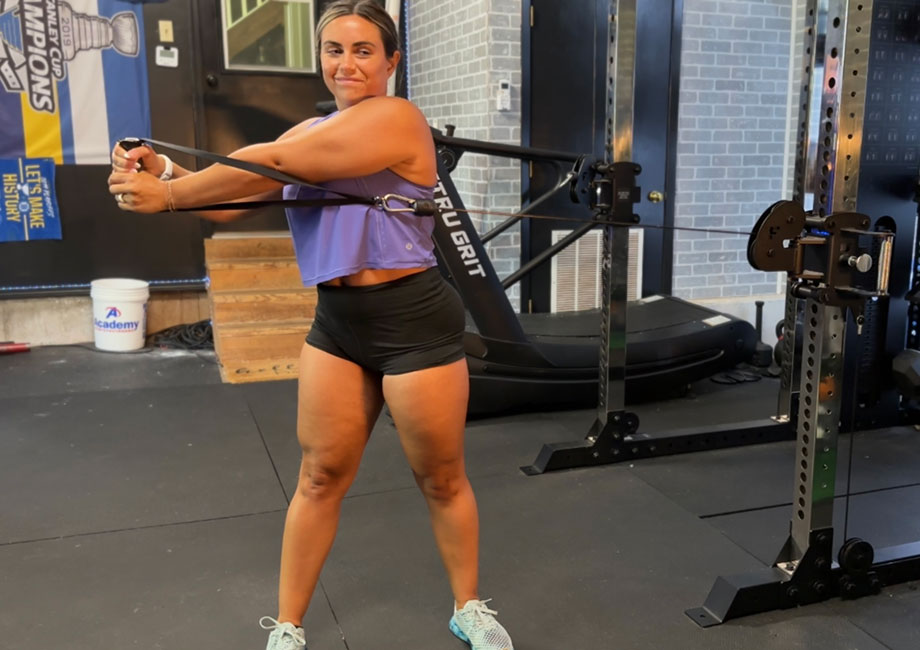
Anti-rotation exercises, on the other hand, involve maintaining alignment as outside forces work to force rotation. Fighting against that resistance works your core muscles isometrically, which is staunchly different from the isotonic contraction produced by rotation exercises.
RELATED: Isometric Exercises
“An isometric training approach [is] superior in terms of enhancing core stiffness,” according to a 2015 study in the Journal of Strength and Conditioning Research2, so anti-rotation exercises will be paramount to cultivating core stability.
6 Best Rotation Exercises
“Anti-rotation exercises are all about fighting against resistance,” says Kate Meier, CPT, USAW-L1, CF-L1. “Rotation exercises, on the other hand, involve creating explosive force through rotational movement. They improve sport performance and, more importantly, make everyday tasks easier to perform.”
Landmine Twists
Why do it: Landmine twists rank among the best landmine exercises because they target various core muscles, including the rectus and transversus abdominis, obliques, and lower back, and emulate a functional movement that you likely do naturally every day.
How to do it:
- Set up your station, then stand facing the base of the landmine attachment.
- Lean forward to grip the end of the barbell with both hands, keeping a tall, strong posture and your arms fully extended.
- Rotate your torso to the left, bringing the bar down until it’s adjacent to your left hip.
- Bring the bar back to the starting position, now rotate to the right side instead.
- Repeat as needed, ensuring to perform equal reps for both sides.
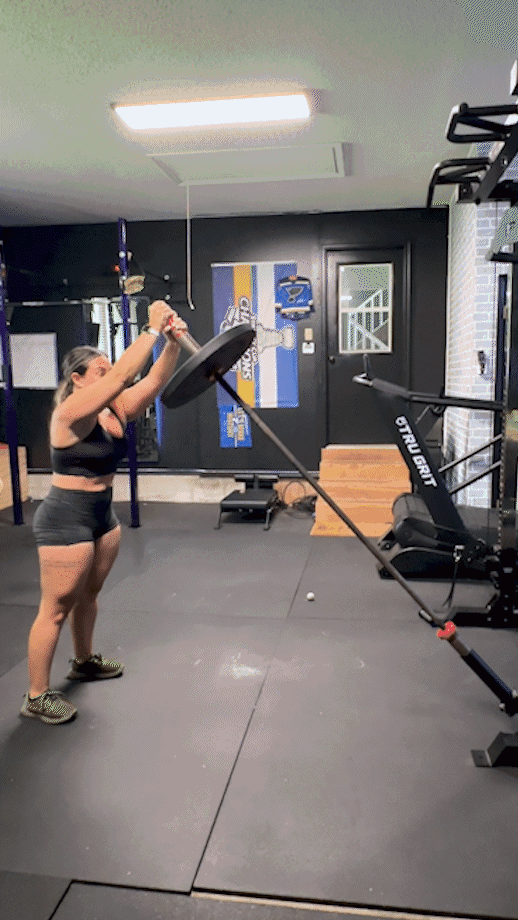
Rotational Wall Slams
Why do it: “Not only does launching a medicine ball full speed at the wall engage your hips and core more effectively than sit-ups, it’s also immensely satisfying,” says Kate.
How to do it:
- Stand holding a medicine ball with the wall approximately 2 to 4 feet to your side.
- Rotate your torso away from the wall slightly, then explosively rotate your hips towards the wall, throwing the ball into it.
- Catch the ball when it bounces off, reset, and repeat.
- Complete all reps, then turn around and throw the ball in the other direction.
RELATED: Medicine Ball Workouts
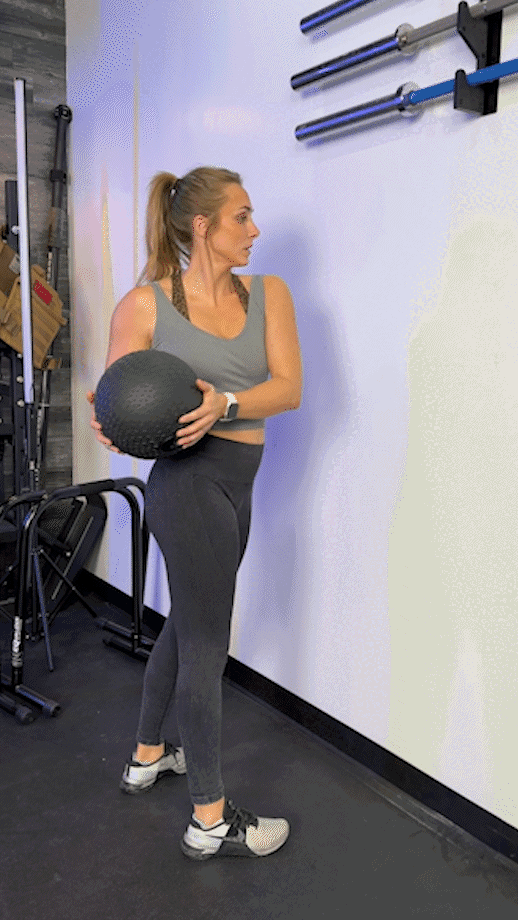
Russian Twists
Why do it: Russian twists involve lots of twisting, targeting those often-overlooked obliques better than other mat exercises. You can use just your bodyweight for this one or grab a medicine ball or free weight to hold for a little extra resistance.
How to do it:
- Sit down on your exercise mat with your feet planted and your knees bent.
- Lean back, lifting your feet slightly, and engage your core. Hold your hands, or choice of free weight, in front of your chest to start.
- Twist your body to one side, bringing your hands or the weight towards the floor.
- Lightly touch the floor, then bring your hands back across the body and touch down on the other side.
- Repeat as needed, ensuring to tap both sides of the body on each rep.
RELATED: Best Exercise Mats
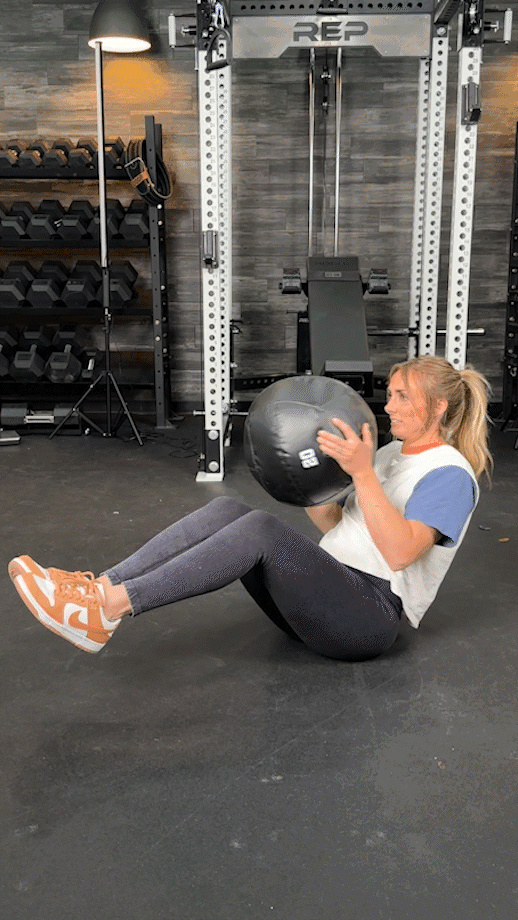
Band Twists
Why do it: You’ll be fighting against the pull of the resistance band during the Pallof press below, but during band twists, it’s quite the opposite. You’re the one creating the rotational force and getting a great ab workout in the process!
How to do it:
- Anchor a resistance band at chest height and stand perpendicular to it.
- Reach across your body and grab the resistance band with both hands.
- Rotate your torso to bring your arms from one side of the body to the other, keeping them straight throughout the full range of motion.
- Hold the end position, then return to the start.
- Repeat as needed, then switch sides and repeat the set.
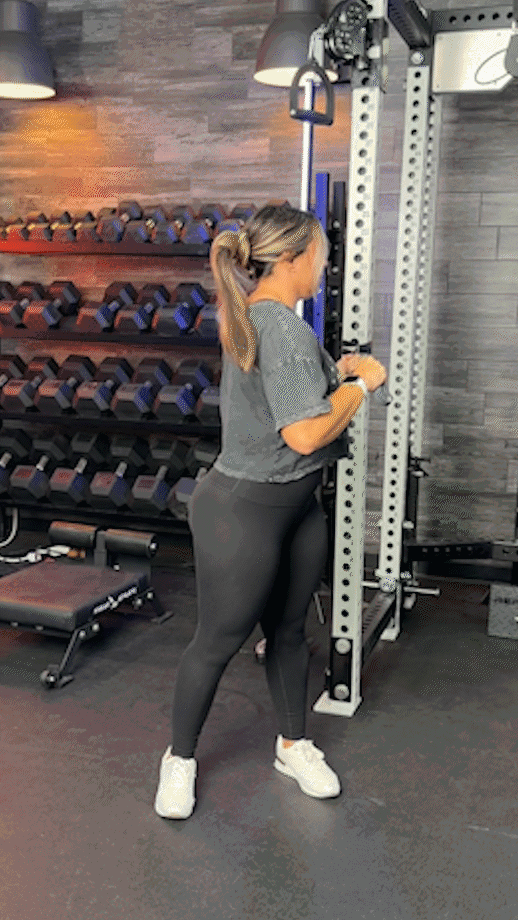
Rotational Lunges
Why do it: “Adding a twist to your regular forward lunge engages numerous muscle groups, including the core muscles, glutes, and hip flexors,” says Kate. “It’s also a fantastic way to warm-up for activities like yoga and Pilates.”
How to do it:
- From a standing position, step forward with your right leg, leaning into it until both your front and back knees form 90-degree angles.
- Slowly rotate your torso to face your front leg and hold briefly.
- Come back to center, then push through your right heel to step back.
- Repeat the movement, this time stepping with your left leg.
- Continue, alternating sides on each rep, until all reps are completed.
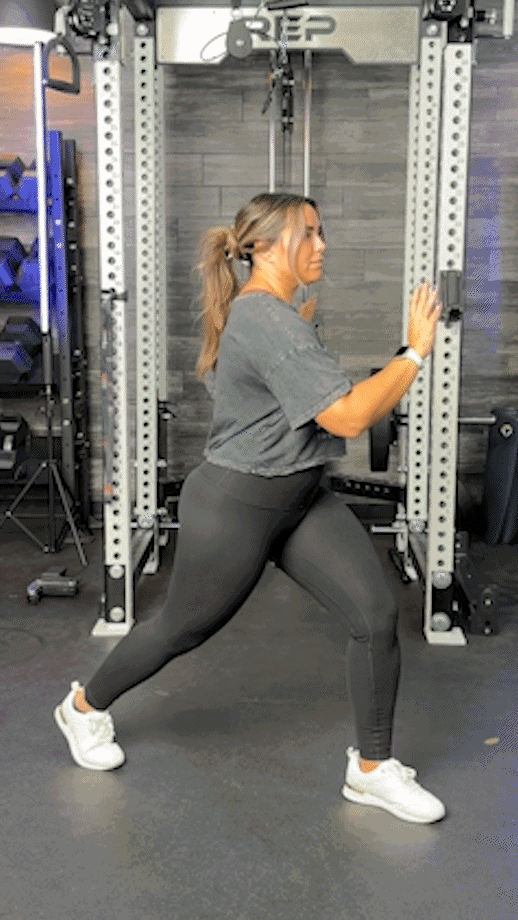
Wood Chop
Why do it: The wood chop exercise provides a full body workout, activating the shoulders and core in the upper body as well as the hips and quads in the lower body. Since it’s based on the actual wood chopping movement, it’s highly functional as well.
How to do it:
- Grab a medicine ball, dumbbell, or the handle of a cable machine set to the high position over. Stand with your feet shoulder width apart and, if using the cable machine, place yourself perpendicular to it.
- Twist diagonally to bring the ball, weight, or handle from one shoulder to the hip of the opposite side.
- Return to the starting position, then repeat for the desired number of repetitions.
- Once finished, switch sides and repeat the set.
RELATED: Cable Ab Workouts
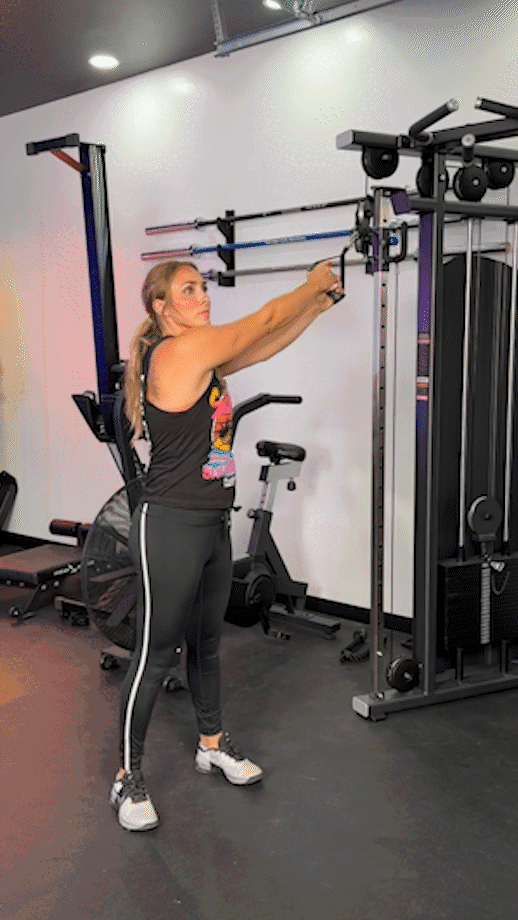
6 Best Anti-Rotation Exercises
Anti-rotation exercises typically involve either maintaining balance or opposing a diagonal push or pull from outside equipment, including cables, resistance bands, and even barbells.
Bird Dogs
Why do it: You’ll need strong core muscles to maintain alignment each time you lift a limb off the floor during the bird dog exercise. It’s a simple, non-impact, bodyweight exercise that provides activation to your core muscles and erector spinae, building core stability.
How to do it:
- Starting on your hands and knees, slowly lift your right leg and left arm simultaneously, keeping them straight as they move. Keep your back straight and core tight.
- Hold the position, then return to the starting position.
- Repeat the movement, this time moving with your left leg and right arm.
- Alternate sides on each rep until the set is complete.
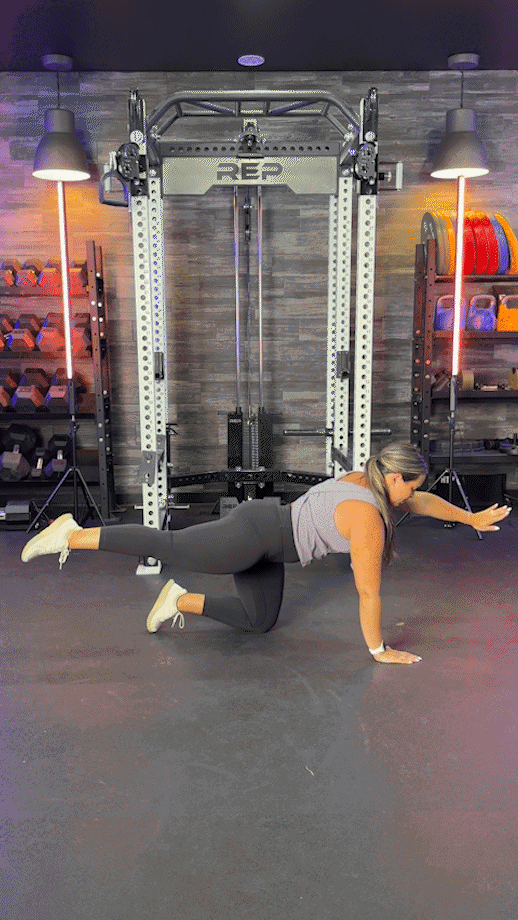
Single-Leg Romanian Deadlifts
Why do it: “Performing the Romanian deadlift unilaterally adds a balance challenge,” says Kate. “You’ll need to use your core to stabilize yourself in order to maintain proper form.”
How to do it:
- Grab a loaded barbell, kettlebell, or two dumbbells and hold them in front of your body.
- Lift one leg off the floor, slightly bending the knee of your weight-bearing leg.
- Push your hips back to hinge forward, bringing your chest towards the floor and your lifted leg into the air behind you.
- Continue descending until you feel a stretch in your hamstring.
- Drive through the heel of your planted foot to return to the starting position.
- Repeat as needed, then switch sides and repeat the set.
RELATED: RDL Workout
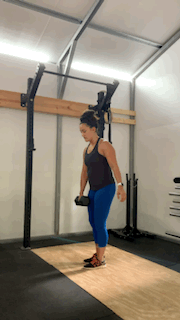
Dead Bug
Why do it: The dead bug exercise looks unassuming and features an innocuous name, but don’t let it fool you! This anti-rotation exercise packs a serious punch, targeting both the rectus and transversus abdominis, obliques, erector spinae, multifidus, hip flexors, and pelvic floor.
How to do it:
- Lie supine with your knees forming a 90-degree angle above your hips. Fully extend your arms over your chest, engage your core, and press your lower back into the mat.
- Bring your right hand back until it’s above your head, simultaneously extending your left leg until it’s totally straight. Pause briefly, holding the contraction.
- Return to the starting position, then repeat the movements for your other arm and leg.
- Repeat as needed, alternating sides on each rep, until the set is complete.
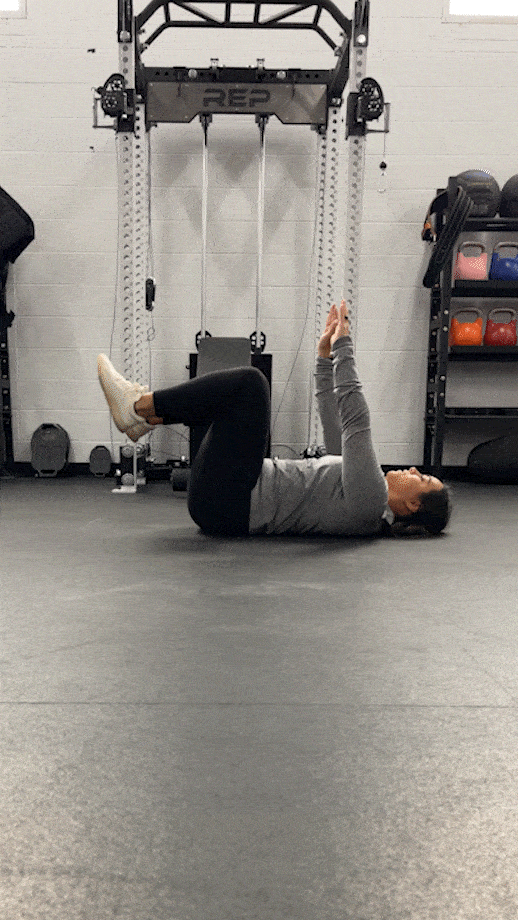
Renegade Rows
Why do it: “Renegade rows are a convenient compound exercise that targets muscles in the back, arms, and core,” says Kate. “You’ll have to fight rotation to maintain proper positioning.””
How to do it:
- Grab a pair of the best dumbbells using a neutral grip and get into the push-up position. Your hands should be stacked directly beneath your shoulders, but your feet should be slightly wider than hip-width to create a more stable base.
- Squeeze your glutes and contract your core as you row one dumbbell into your ribs.
- Slowly return the dumbbell to the floor, then repeat with the other dumbbell.
RELATED: How to Do a Renegade Row
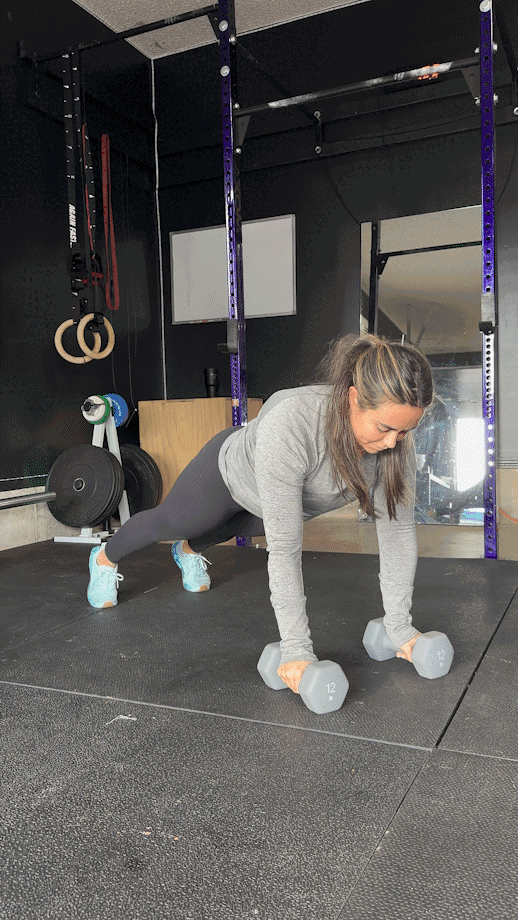
Pallof Press
Why do it: The Pallof press is a versatile anti-rotation movement that can be performed standing or from a half-kneeling position. It targets various upper body muscles, making it an essential movement for a well-rounded core training program.
How to do it:
- Adjust a cable machine or anchor a resistance band so it’s at chest height.
- Stand with your feet shoulder-width apart and the handle of your cable machine or resistance band held with both hands in front of your chest.
- Push the handle or band forward, resisting the rotational pull.
- Hold the end position, then bring it back slowly.
- Repeat as needed, then switch sides.
RELATED: Best Cable Machine for Home Gyms
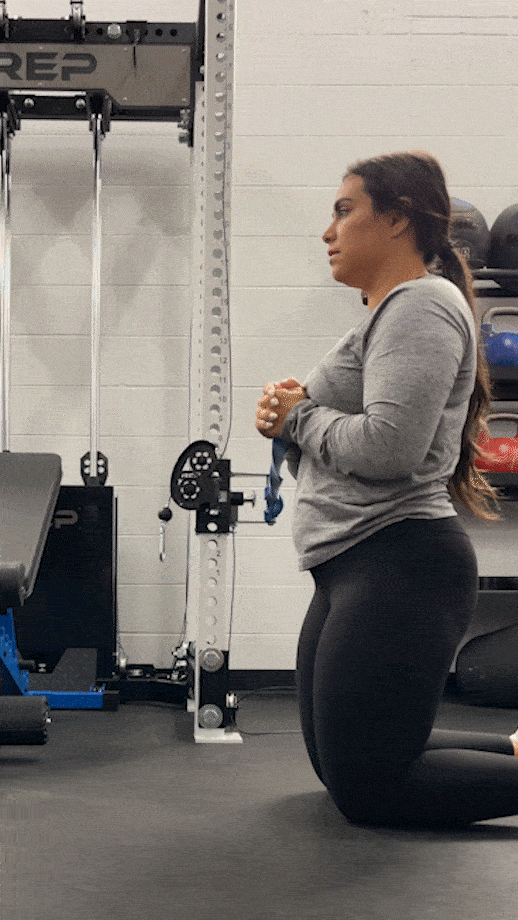
Shoulder Taps
Why do it: Shoulder taps are a simple, beginner-friendly movement that requires no equipment whatsoever to train your core, glutes, arms, wrists, and shoulders.
How to do it:
- Get into the high plank position.
- Reach a single arm across the body to tap the shoulder on the opposite side. For example, lift your right hand, bring it across, and tap your left shoulder.
- Place the hand back down on the floor, then repeat for the other side. Avoid swaying back and forth as you move, as the goal is to maintain a strong, rigid posture.
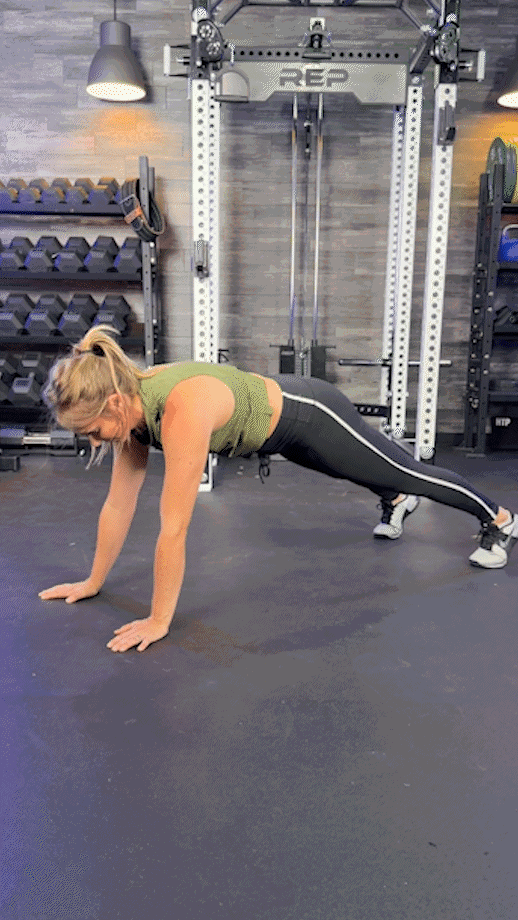
How to Work Rotation and Anti-Rotation Core Exercises Into Your Program
Tons of exercise programs tack on a few ab exercises at the end of the workout; however, it’s often not enough to produce any real results, especially after expending virtually all of your energy on other exercises.
“To get the maximum effect from your core training, you want to get it in as close to the beginning of the session as possible,” says Kate Meier, CPT, USAW-L1, CF-L1, and GGR Head of Content. “Giving it its own dedicated day, just as you do with other muscle groups, is not a bad idea either.”
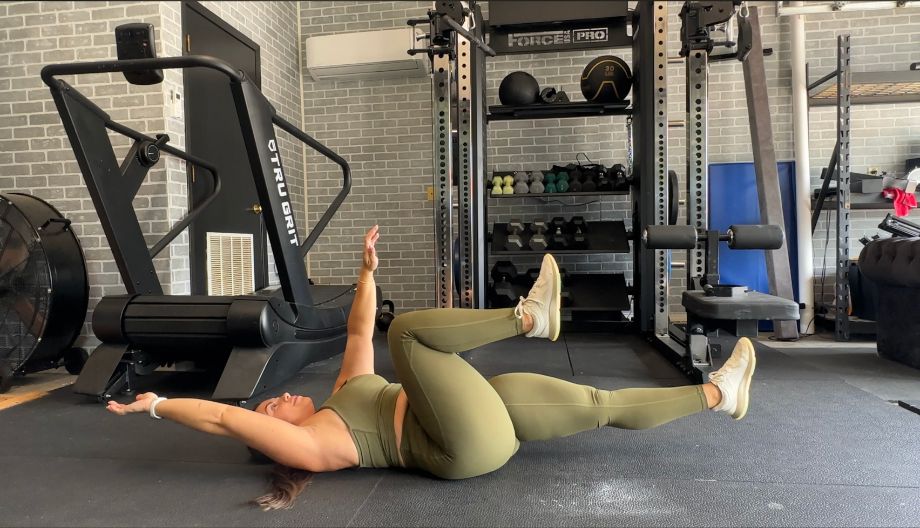
Here’s a sample rotation and anti-rotation core training workout to get you started.
| Exercise | Sets | Reps |
| Single-Leg RDL | 2 to 3 | 8 to 12 |
| Wood Chops | 2 to 3 | 8 to 12 |
| Pallof Press | 2 to 3 | 8 to 12 |
| Band Twists | 2 to 3 | 8 to 12 |
| Dead Bugs | 2 to 3 | 8 to 12 |
| Russian Twists | 2 to 3 | 8 to 12 |
Anti-Rotation Exercises: FAQs
What are the benefits of anti-rotation exercises?
The main benefit of anti-rotation exercises is improved core stability, which helps promote good posture, enhance sport performance, and relieve low back pain3.
What do anti-rotation core exercises improve?
Anti-rotation core exercises require you to brace the core and stabilize your posture to combat rotational pull from an outside force. In doing so, you create an isometric contraction of the core muscles, leading to improved core stability and stiffness.
RELATED: Kettlebell Core Workout
What is the difference between an anti-rotation and rotation core exercise?
The key difference between rotation and anti-rotation exercises is that rotation exercises involve creating rotational force while anti-rotation exercises involve fighting against it.
References
1. Payne A. Sagittal, frontal and transverse body planes: Exercises & Movements. NASM. https://blog.nasm.org/exercise-programming/sagittal-frontal-traverse-planes-explained-with-exercises
2. Lee BC, McGill SM. Effect of long-term isometric training on core/torso stiffness. J Strength Cond Res. 2015;29(6):1515-1526. doi:10.1519/JSC.0000000000000740
3. Chang WD, Lin HY, Lai PT. Core strength training for patients with chronic low back pain. J Phys Ther Sci. 2015;27(3):619-622. doi:10.1589/jpts.27.619
Further reading

Have you ever wondered what cardio does to your body? Well, we have all the answers here. Read more

If you're in the market for a bar that's made for heavy lifting, check out our REP Fitness Helios Squat Bar review to see if this bar’s right for your gym. Read more

One of the most common fitness goals is getting “six-pack abs,” so fitness enthusiasts in gyms everywhere take things to the mat, knocking out crunch after crunch in an endless pursuit of a chiseled midsection to show their Instagram and TikTok followers.A well-developed rectus abdominis, unfortunately, doesn’t equate to core strength and stability, and if you’re solely relying on sagittal plane exercises like the crunches exercise and sit-ups, chances are you’re not reaching your full fitness potential. » Read more about: 6 Rotation and 6 Anti-Rotation Exercises to Elevate Your Core Strength » Read more

Is this the best combination squat rack on the market? Find out in our Vesta Pro Series review! Read more

